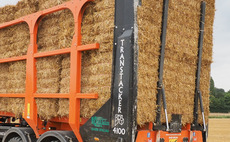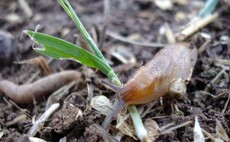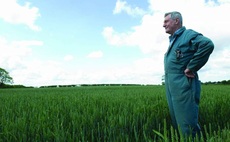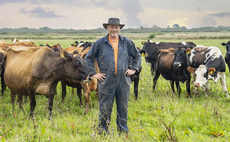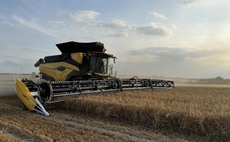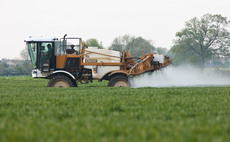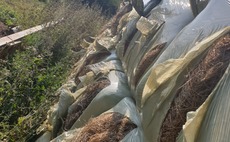
With a large amount of data to hand and a willingness to consider new approaches, one Leicestershire-based farm business is keen to learn more about how crop nutrition can contribute to better returns.
How to unlock soil nutrients, achieving the best balance between nutrients and pesticides and how best to improve margins are key goals for one Leicestershire-based farm business.
Sherwood Farms, the AHDB Belvoir Monitor Farm, is farmed by Michael Parker and his father. The arable sector of the business is divided into three blocks, each benefiting from applications of layer hen manure or compost. Making the most of these materials has stimulated a shared interest in crop nutrition.
"Manure and compost help, in terms of having high indices and high organic matter but can bring their own problems with nutrient lock-up," says Mr Parker.
He wants to better understand this, but also how he can improve yields, with an eye on margins, through better crop nutrition.
The farm already has a large amount of data on crop nutrient status with the Parkers carrying out soil testing, tissue analysis and grain testing.
Soil nutrient testing has been done on the farm for 20 years with all fields being tested on a five-year rotation. It costs £25/test and determines levels of pH, phosphate, potassium, magnesium, boron, copper, zinc, manganese, sulphur, calcium, iron and molybdenum. "We can use this information to establish suitable crops for the soil type, look to see whether any extra applications may need to be considered, such as lime or gypsum, and it helps to establish what to watch out for in the season," says Mr Parker.
Tissue nutrient status testing is carried out prior to T0, T1 and T2. The aim is for one test per crop type on similar land which allows micronutrient applications to be combined with fungicide sprays as far as possible.
Finally, grain nutrient testing has been carried out for several years and now as part of YEN Nutrition, which the farm participates in, says Mr Parker. "This is the end result but also allows us to start planning ahead - if tissue analyses did not stack up with grain perhaps do more of this or less of that."
All three tests have limitations, says Mr Parker. "For example with manganese, soil tests can be unreliable. Leaf and grain tests are better. You cannot take each nutrient at face value - for how much is available there is not a definitive answer."
But having access to results from the three different types of test helps with crop nutrition planning, he says. "While our trace element spend may be higher at £33/ha [than others in the AHDB Farmbench group] theoretically we should achieve higher margins through more resilient crops in tough years, higher margins and the possibility of reducing other inputs through healthier crops."
Reducing inputs is an area the Parkers are starting to look at and have recently begun to work with Ed Trotter, an agronomist from Edaphos Agronomy.
"The company appears to offer a more integrated approach, without ties to a major chemical company. Hopefully they can join together what is sometimes a disjointed chemical versus nutrition programme.
"Their philosophy is to use nutrition to better look after our soils and reduce spending on pesticides without going fully organic."
Other recent changes on the farm include moving from solid to liquid fertiliser this spring. "It is mainly a question of cost and logistics. It has allowed us to get a bigger sprayer which will help us at other times of the year. It will also help with more accurate applications - granular at 36m would have been a bit iffy."
With the switch, extra flexibility is possible with sulphur application, so the farm is trying Omex Nitroflo 26N - 5SO3 for the heavy land and 24N - 7.5SO3 for the lighter land to allow season round application of sulphur.
Having used N-Sensor for over 10 years, this year Mr Parker is switching to Yara Atfarm, which offers crop monitoring via satellite. "The N-Sensor has been a good tool, however, it relies on operator set-up which has allowed us to over- or under-apply in the past. With the upgrade of the sprayer, the N-Sensor would also need upgrading, so the farm is going to trial the satellite-based system, which offers a significant cost saving."
Mr Parker acknowledges that the system cannot match the convenience and accuracy of the N-Sensor, but as it runs off the same algorithm and costs 94 per cent less per year, he believes it is worth a try. To improve rate accuracy, he says scans will be combined with N-Tester readings to reduce the chances of over-/under-applying in the future.
Farm facts: Sherwood Farms
AHDB Belvoir Monitor Farm
Farmed by Michael and James Parker
Total area 630 hectares of which 560ha arable - latter in three blocks
Two-thirds clay based. Remainder clay loams, sandy loams and loamy sand
Cropping: winter wheat, beans, winter barley, triticale, spring linseed, spring barley, millet, lupins
Laying hens - 2,100t manure/annum all spread on arable land
Composting business - 2,500t finished compost/annum all spread on arable land




